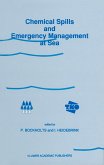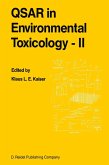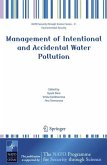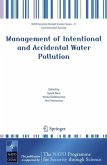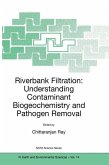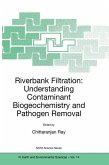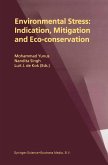While toxicity testing procedures and hazard assessment approaches have been published in past decades, many are wanting in detail for users to fully understand or reproduce successfully. Small-scale Freshwater Toxicity Investigations (Volumes 1 and 2) responds to this need by providing comprehensive information on biological testing which is normally scattered and difficult to find.
In Volume 1, 15 chapters on toxicity tests are described in great detail by way of a homogeneous structure that all contributors had to follow. These comprehensive texts allow readers to be informed of relevant information (background, theory, practice) linked to each bioassay. Hence, book contents can be used both for technology transfer purposes (e.g., classroom or workshop courses) and to undertake practical toxicity testing (e.g., in a private, public or university laboratory).
In Volume 2, 11 chapters on hazard assessment schemes are describedin great detail by way of a homogeneous structure that all contributors had to follow. These comprehensive texts allow readers to know the different approaches/strategies, based on applying batteries of bioassays, that are being used internationally to assess the toxic potential of complex environmental media (e.g., effluents, sediments) impacted by chemical contamination stemming from human activities.
Hinweis: Dieser Artikel kann nur an eine deutsche Lieferadresse ausgeliefert werden.
In Volume 1, 15 chapters on toxicity tests are described in great detail by way of a homogeneous structure that all contributors had to follow. These comprehensive texts allow readers to be informed of relevant information (background, theory, practice) linked to each bioassay. Hence, book contents can be used both for technology transfer purposes (e.g., classroom or workshop courses) and to undertake practical toxicity testing (e.g., in a private, public or university laboratory).
In Volume 2, 11 chapters on hazard assessment schemes are describedin great detail by way of a homogeneous structure that all contributors had to follow. These comprehensive texts allow readers to know the different approaches/strategies, based on applying batteries of bioassays, that are being used internationally to assess the toxic potential of complex environmental media (e.g., effluents, sediments) impacted by chemical contamination stemming from human activities.
Hinweis: Dieser Artikel kann nur an eine deutsche Lieferadresse ausgeliefert werden.
"The editors and contributors have done an excellent job of covering a wide and rapidly moving field of environmental science in a sound, exciting, and up-to-date way. On the one hand, these volumes are very suitable for well-experienced researchers and, on the other, for students, because they provide clear explanations of small-scale toxicity testing procedures and hazard assessments with special attention being given to freshwater investigations. Excellent, very useful!"
Ivan Holoubek, Professor at Masaryk University Brno, CR and President of SECOTOX
"Environmental contamination is a worldwide problem, these volumes provide a detailed account of toxicity assessment using biotests for freshwater and sediment which will be of great value to students and practitioners alike."
Ian Falconer, Editor Environmental Toxicology, University of Adelaide, Australia
"Both editors and contributors of these books have demonstrated outstanding talent in presenting a thorough review of toxicity testing applications and in detailing the theoretical and practical aspects of several small-scale procedures and hazard assessment schemes. These two companion volumes are an important contribution to the field of freshwater ecotoxicology. They will prove immensely useful for all professional scientists and students alike desirous of knowing and applying reliable tools and approaches to appraise the numerous adverse effects that anthropogenic sources of toxic pollutants can have on aquatic environments."
François Ramade, Emeritus Professor of Ecology, University of Paris-Sud, France
"Blaise and Ferard have provided a comprehensive account of biotests for environmental toxicity and their use in hazard assessment of contamination which will be of great value to those concerned with the worldwide problem of environmentaldegradation". Ian Falconer, Editor Environmental Toxicology University of Adelaide, Australia.
"Both editors and the contributors of this book have demonstrated that they are able to provide comprehensive information on biological testing as well regarding theory and concepts as regarding toxicity testing applications. For academia, governmental authorities and consulting people the two volumes are of interest and helpful. One can state that these two volumes are "state of the art" and are an important contribution to the field of freshwater ecotoxicology". Prof..Dr. rer.nat. Dr. h.c. A. Kettrup, Technische Universität München
Environmental contamination is a world-wide problem, which is of increasing concern with the rapid industrialization of nations which are moving out of the less-developed nation status. Many industrial products formerly made in highly developed nations, are now being made offshore and imported, leaving the environmental impacts of their production to nations with less sophisticated procedures for environmental monitoring. The advantage of small-scale biotests for toxicity assessment is the simplicity of equipment requirements and the lesser need for advanced technical training to carry out the tests. This approach to pollution monitoring is therefore highly relevant to the emerging industrialized nations. Biotests however continue to remain relevant to highly developed nations, due to the complex mixtures of pollutants generated by industrial processes, which are not totally amenable to assessment by analytical chemistry.
Volume 1 describes, in sufficient detail for the methodology to be followed in an environmental pollution laboratory, use of bacteria, algae, macrophytes, protozoa, small invertebrates and fish cells in toxicity testing. The volumes both commence with an overview of the application of small scale biotests to effluents, with extensive referencing. It is of interest to note that the most-used toxicity tests employ small invertebrates such as Daphnia species which can be obtained from wild populations, thus reducing the costs of tests. One of the points made in this volume is the different responses of organisms at different trophic levels to pollutants, necessitating use of a range of organisms in testing of any pollutant.
Volume 2 demonstrates the integration of a battery of toxicity tests in the hazard assessment of pollutants. One of the issues that arises from the differential sensitivity of organisms to pollutants is the approach to be used when applying disparate results in a composite hazard assessment. In this volume several different approaches are described, aimed at providing an overall toxicity measure that is intelligible to regulators. Methodologies developed in Canada, France, Germany and South America are described, using different approaches. The volume concludes with methodologies for toxicity assessment in solid wastes and sediments.
Both volumes will be of practical use to practitioners in pollution monitoring and hazard assessment, and can be recommended. Ian Falconer, Editor Environmental Toxicology University of Adelaide, Australia.
Ivan Holoubek, Professor at Masaryk University Brno, CR and President of SECOTOX
"Environmental contamination is a worldwide problem, these volumes provide a detailed account of toxicity assessment using biotests for freshwater and sediment which will be of great value to students and practitioners alike."
Ian Falconer, Editor Environmental Toxicology, University of Adelaide, Australia
"Both editors and contributors of these books have demonstrated outstanding talent in presenting a thorough review of toxicity testing applications and in detailing the theoretical and practical aspects of several small-scale procedures and hazard assessment schemes. These two companion volumes are an important contribution to the field of freshwater ecotoxicology. They will prove immensely useful for all professional scientists and students alike desirous of knowing and applying reliable tools and approaches to appraise the numerous adverse effects that anthropogenic sources of toxic pollutants can have on aquatic environments."
François Ramade, Emeritus Professor of Ecology, University of Paris-Sud, France
"Blaise and Ferard have provided a comprehensive account of biotests for environmental toxicity and their use in hazard assessment of contamination which will be of great value to those concerned with the worldwide problem of environmentaldegradation". Ian Falconer, Editor Environmental Toxicology University of Adelaide, Australia.
"Both editors and the contributors of this book have demonstrated that they are able to provide comprehensive information on biological testing as well regarding theory and concepts as regarding toxicity testing applications. For academia, governmental authorities and consulting people the two volumes are of interest and helpful. One can state that these two volumes are "state of the art" and are an important contribution to the field of freshwater ecotoxicology". Prof..Dr. rer.nat. Dr. h.c. A. Kettrup, Technische Universität München
Environmental contamination is a world-wide problem, which is of increasing concern with the rapid industrialization of nations which are moving out of the less-developed nation status. Many industrial products formerly made in highly developed nations, are now being made offshore and imported, leaving the environmental impacts of their production to nations with less sophisticated procedures for environmental monitoring. The advantage of small-scale biotests for toxicity assessment is the simplicity of equipment requirements and the lesser need for advanced technical training to carry out the tests. This approach to pollution monitoring is therefore highly relevant to the emerging industrialized nations. Biotests however continue to remain relevant to highly developed nations, due to the complex mixtures of pollutants generated by industrial processes, which are not totally amenable to assessment by analytical chemistry.
Volume 1 describes, in sufficient detail for the methodology to be followed in an environmental pollution laboratory, use of bacteria, algae, macrophytes, protozoa, small invertebrates and fish cells in toxicity testing. The volumes both commence with an overview of the application of small scale biotests to effluents, with extensive referencing. It is of interest to note that the most-used toxicity tests employ small invertebrates such as Daphnia species which can be obtained from wild populations, thus reducing the costs of tests. One of the points made in this volume is the different responses of organisms at different trophic levels to pollutants, necessitating use of a range of organisms in testing of any pollutant.
Volume 2 demonstrates the integration of a battery of toxicity tests in the hazard assessment of pollutants. One of the issues that arises from the differential sensitivity of organisms to pollutants is the approach to be used when applying disparate results in a composite hazard assessment. In this volume several different approaches are described, aimed at providing an overall toxicity measure that is intelligible to regulators. Methodologies developed in Canada, France, Germany and South America are described, using different approaches. The volume concludes with methodologies for toxicity assessment in solid wastes and sediments.
Both volumes will be of practical use to practitioners in pollution monitoring and hazard assessment, and can be recommended. Ian Falconer, Editor Environmental Toxicology University of Adelaide, Australia.

